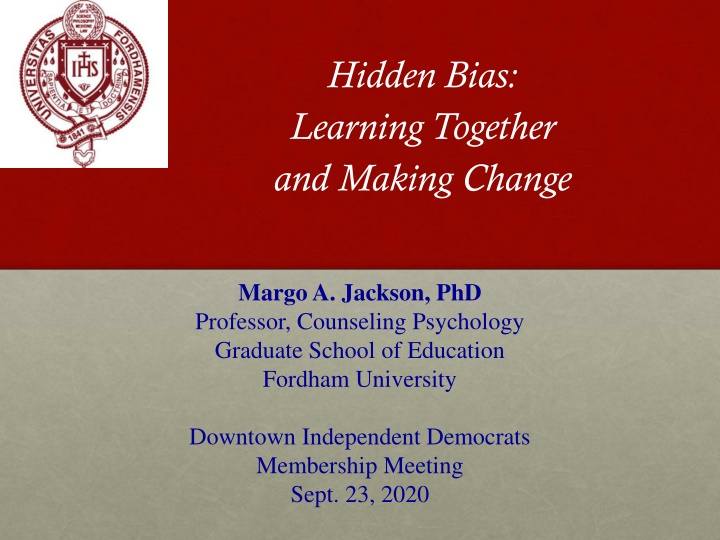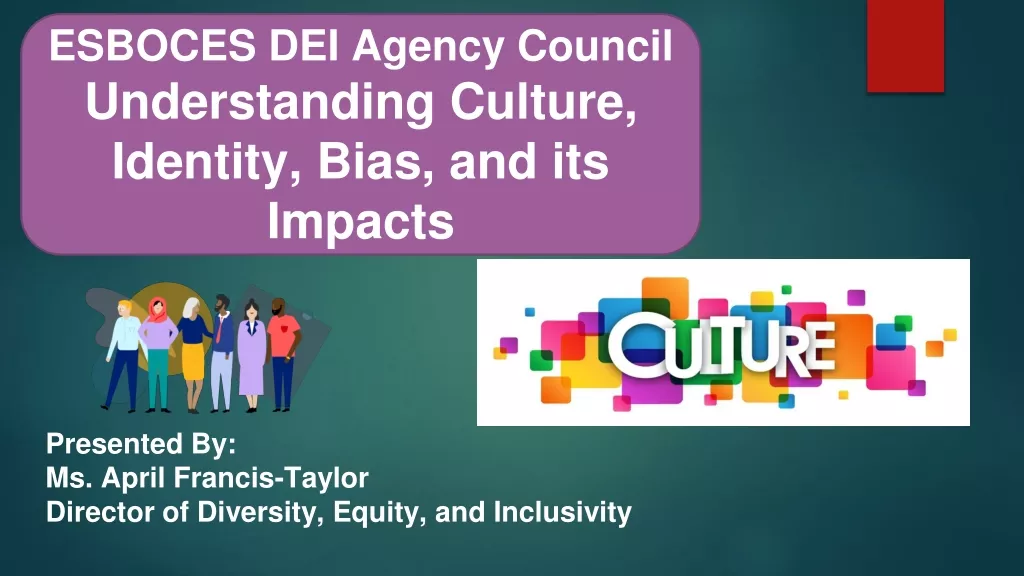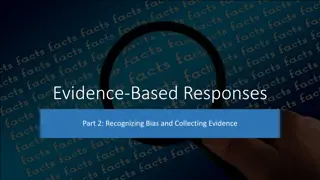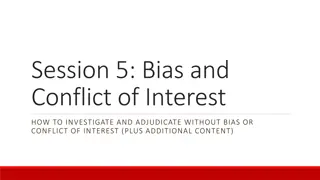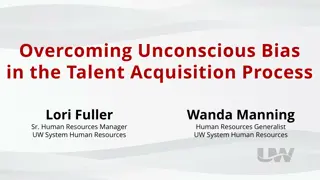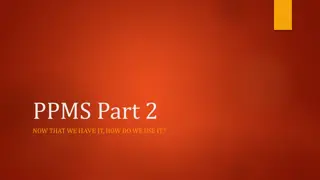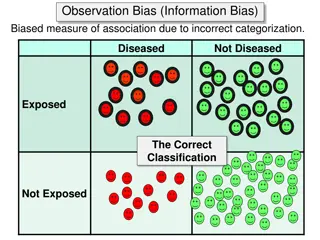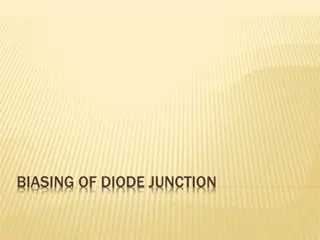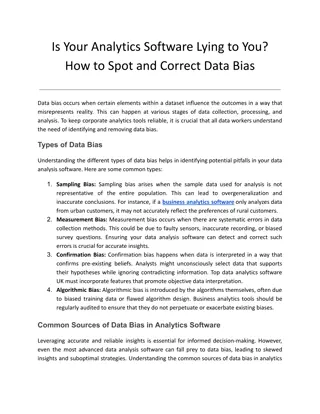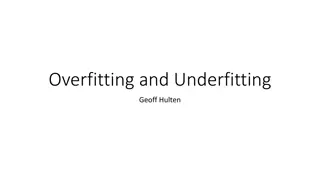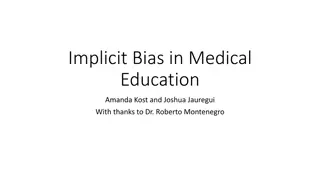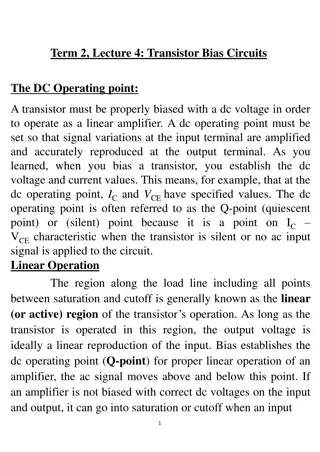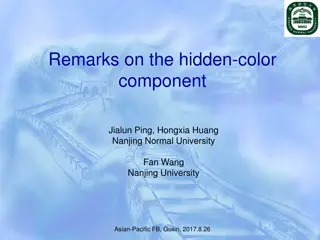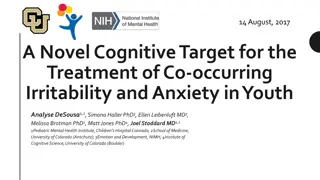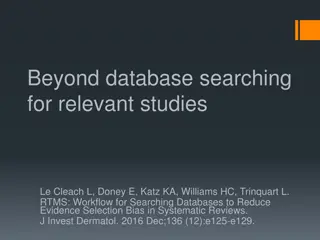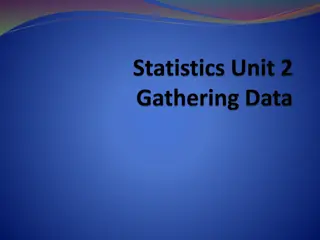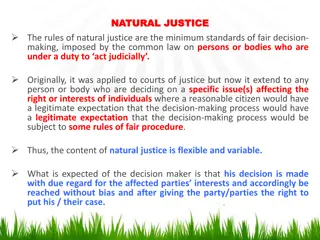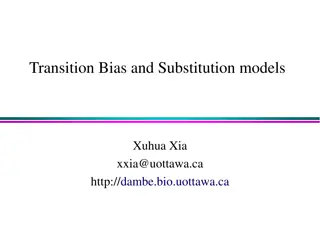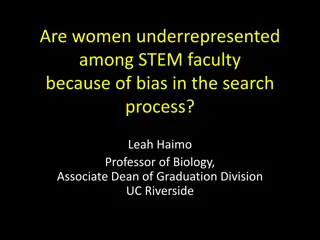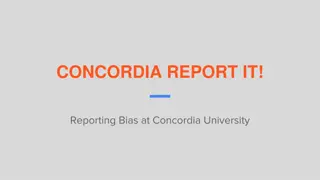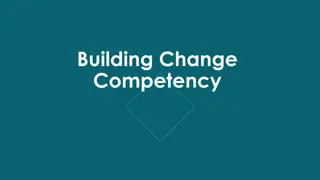Hidden Bias: Learning Together and Making Change
This report delves into the value of arts in and beyond schools, reflecting on the changes in arts education since 1982. Authored by Sally Bacon OBE and Pauline Tambling CBE, it provides insights, recommendations, and case studies of excellent arts education practices. Explore the impact of the arts on education and creative potential, supported by the Calouste Gulbenkian Foundation and A New Direction.
Uploaded on Feb 21, 2025 | 0 Views
Download Presentation

Please find below an Image/Link to download the presentation.
The content on the website is provided AS IS for your information and personal use only. It may not be sold, licensed, or shared on other websites without obtaining consent from the author.If you encounter any issues during the download, it is possible that the publisher has removed the file from their server.
You are allowed to download the files provided on this website for personal or commercial use, subject to the condition that they are used lawfully. All files are the property of their respective owners.
The content on the website is provided AS IS for your information and personal use only. It may not be sold, licensed, or shared on other websites without obtaining consent from the author.
E N D
Presentation Transcript
Hidden Bias: Learning Together and Making Change Margo A. Jackson, PhD Professor, Counseling Psychology Graduate School of Education Fordham University Downtown Independent Democrats Membership Meeting Sept. 23, 2020
INTRODUCTION It is an honor to be here with you to learn about your community and political activism, to engage in some courageous conversations with you about raising awareness of hidden biases and strengths, doing constructive activism work, and to share some resources to further your efforts.
INTRODUCTION We truly are stronger together in actively working to engage our elected officials to ensure that the concerns, needs and interests of our community are heard and represented (DID Mission). I am inspired by the resolutions on your agenda tonight, aimed to promote police accountability and reduce school segregration.
MAIN POINTS 1. What are, and why do we have, hidden biases? 2. How do racism and other social injustices operate at individual, interpersonal, and systemic/structural levels? 3. From grounding in cultural humility, critical consciousness, and intersectionality perspectives of both/and (vs. either/or), how can we constructively address hidden biases and promote effective activism?
GROUNDING ASSUMPTION Cultural humility, defined by Hook et al. (2017, pp. 29-30): Culturally humble therapists [and activists] are able to have an accurate perception of their own cultural values as well as maintain an other-oriented perspective that involves respect, lack of superiority, and attunement regarding their own cultural beliefs and values The intrapersonal aspect of cultural humility captures how therapists [and activists] are able to view themselves culturally, including their biases, strengths, limitation, areas for growth, beliefs, values, attitudes, and assumptions. In doing so, culturally humble therapists [and activists] should be open to feedback from others The interpersonal aspect of cultural humility describes a way of being with others that is open to and curious about others cultural beliefs and values rather than presumptuous or arrogant
CRITICAL CONSCIOUSNESS In his classic book Pedagogy of the Oppressed, Paolo Friere (1970/2000) explained that social injustice is perpetuated by the dominant system of social relations that creates a culture of silence for repressing the voices of and instilling negative self-images into the people it oppresses. Thus, Freire advocated, education is needed to engage in a learning process to develop critical consciousness, defined as a conscious awareness not only to perceive, expose, and assess sociopolitical and economic contradictions but also to take action against the oppressive elements that are illuminated by that understanding. (Jackson & Mathew, 2017, p. 436)
https://www.paperpinecone.com_blog_teaching-difference-between-https://www.paperpinecone.com_blog_teaching-difference-between- equality-equity-and-justice-preschool.png
Hidden biases We all have hidden biases. These are our blind spots to pervasive stereotypes and systemic injustice influences that limit our understanding and effectiveness in relationships, communication, and activism And too, I argue, we also have hidden resources, often unrecognized, that are unique and shared personal strengths and aptitudes for connecting and working to advocate for constructive change.
INTERSECTIONALITY in perspective taking First, I d like to share with you a bit about what is my own vested interests, personally and professionally, for promoting this work through what I see as an evolving process of lifelong learning and continuing development
INTERSECTIONALITY in perspective taking I know how the process of developing critical consciousness and activism understandably elicits defensive reactions. A primary focus in my teaching, research, and service at Fordham University is on empathically and constructively exploring hidden biases and resources for multicultural understanding that contributes to social justice progress, healthy development, and wholesome community building. Yet, none of us myself included is immune to blind spots in our intersecting group member identities of oppression and privilege.
INTERSECTIONALITY in perspective taking My social position in group member identities of privilege, by which I can take for granted many advantages that may blind me to abuses of power, on one hand, or cost me when I challenge the status quo, on the other hand, include being White U.S. citizen Protestant middle-class SES Highly educated work in NYC, live in rural small town have many family members serving as police, including my father
INTERSECTIONALITY in perspective taking My social position in group member identities of oppression, by which I too often encounter being excluded, discounted, mistrusted, or threatened include that I am Woman Partnered with a Black man (my husband of 40 years - a strong, compassionate, intelligent, and resilient man; extraordinary father; and gifted coach) Mother of biracial offspring (our two adult daughters, both essential health care providers, are biracial and truly beautiful, inside and out)
Both/and We can learn that while the intersectionality of our perspectives often operates to limit our perspective-taking (e.g., in reactions of defensiveness or divisiveness), we can cultivate both/and perspectives to build on our strengths and promote our understanding and activism.
Both/and We can help expand understanding of ourselves and others through intersectionality perspectives and discussions to consider the complexity of both/and aspects that may exist in our lives and relationships in contrast to making either/or assumptions limited to Black/White or good/bad.
More on what are hidden biases Implicit Biases Automatic Pervasive Often operate without conscious awareness Negative stereotypes and supremacy assumptions Related to complex histories
More on what are hidden biases Excerpts from Peggy McIntosh (1998; 2014): one White female faculty member s reflections on her own privilege assumptions and taken-for-granted blind spots, e.g.: I can be sure that my children will be given curricular materials that testify to the existence of their race. I can do well in a challenging situation without being called a credit to my race. I am never asked to speak to all the people of my racial group. I can go home from most meetings of organizations I belong to feeling somewhat tied in, rather than isolated, out-of-place, outnumbered, unheard, held at a distance, or feared.
And why are biases so hidden? Historic legacies of power used to oppress and continuing influences Behavioral ethics research Attention deficits of people in social positions of power
We did not ask to grow up in this smog but it is our responsibility to change!
Levels of Racism: A Theoretic Framework and a Gardner s Tale (Jones, 2000) Race-associated disparities in health outcomes are persistently documented in the U.S. yet remain poorly explained or investigated scientifically The variable of race: Is not a biological construct that reflects innate differences But is a social construct that precisely captures the social classification of people in a race-conscious society such as the U.S. and the impacts of racism
Levels of Racism: A Theoretic Framework and a Gardner s Tale (Jones, 2000) 3 Levels of Racism Institutionalized racism Personally mediated racism Internalized racism
Levels of Racism: A Theoretic Framework and a Gardner s Tale (Jones, 2000) Jones s allegory, Levels of Racism: A Gardener s Tale vivid, real-life illustration of the importance of environment [and the power of confirmation bias in explanatory misattributions for results] This story illustrates the relationship between the 3 levels of racism
Courageous conversations Dialogues are open, free, responsible, respectful exchanges on challenging topics of relevance to promoting understanding and activism
Courageous conversations Challenging diversity dialogues, or courageous conversations, are defined as difficult dialogues centered on an awakening of potentially conflicting views or beliefs or values about social justice issues (such as racism, sexism, etc.).
Courageous conversations Research has found that diversity dialogues are often difficult for educators and others to facilitate because of social norms to avoid, ignore, silence, or discourage in-depth exploration of potentially offensive, uncomfortable, and emotionally intense topics such as issues relevant to diversity and social injustices.
Courageous conversations For example on issues of race and racism, Derald Wing Sue (2013) has found reasons why these are difficult dialogues include for whiteeducators and learners, fears of appearing racist, of realizing their racism, of acknowledging White privilege, and of taking responsibility to combat racism (p. 663) for educators and learners with identities as people of color, dialogues on race and racism risk their being subjected to microaggressions that minimize, discount, invalidate, or assail their own racial/ethnic identities.
RESOURCES Thus, defensive reactions from various perspectives operate to shut down dialogue and limit understanding and progress. I recommend as one helpful resource: Israel, T. (2020). Beyond your bubble: How to connect across the political divide Skills and strategies for conversations that work. American Psychological Association.
CONCLUSION I sincerely appreciate your commitment to considering how the invaluable political activism work of DID may be further empowered by learning together about hidden biases and persistently taking action to refocus and center attention on constructively addressing racial disparities and social justice advocacy.
Thank you! Take care, lean into next steps, & let s talk Margo A. Jackson, PhD mjackson@fordham.edu
